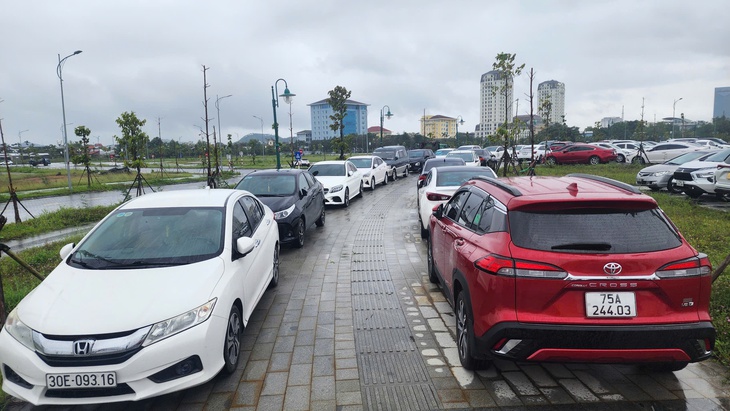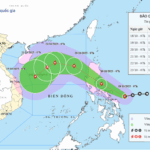On the morning of October 22, the Director of Hue City Department of Education and Training said the department has issued an official notice allowing students to take leave from this afternoon through October 23 to avoid the storm.
In addition to school closures, the Director also announced that the venue for the live television broadcast of the Road to Mount Olympia competition finals scheduled for the morning of October 26 will be moved due to storm impacts.
Accordingly, the program will be held at the Theater (1 Le Loi Street, Thuan Hoa Ward, Hue City) instead of the previously planned outdoor location at Nghinh Luong Dinh in front of the Hue Citadel.
“Although everything was ready for the live broadcast, the complex storm situation forced us to change the venue.
This is unfortunate but very necessary at this time,” the Director said.
Also on the morning of October 22, many residents in Hue city hurriedly moved their cars to higher areas to avoid flooding. Areas such as the central administrative park area (Vy Da Ward), Phu Cam Church, Aeon Mall shopping center… were chosen by Hue residents as safe places to park their cars before forecasts predicted heavy rain and serious flooding due to the typhoon.
A resident living in Vy Da Ward, Hue City said the Xuan Phu area where he lives has relatively low terrain and is prone to prolonged flooding during heavy rain.
Given the complex flood situation in northern provinces recently, he proactively moved his car to the central administrative park area (Vy Da Ward) to avoid flooding and protect his property.
“In recent days, local authorities in Hue have warned of very heavy rain after the typhoon, so I proactively moved my car to avoid floods in advance, to prevent being caught off guard when water levels rise,” he said.
Which areas in Hue are forecast to experience strong winds, flooding, and landslides due to the typhoon?
According to the Hue City Meteorological and Hydrological Station, 15 communes and wards are at risk of being hit by strong typhoon winds including: Phong Dinh, Phong Phu, Dan Dien, Phong Quang, Quang Dien, Thuan An, Hoa Chau, Duong No, My Thuong, Phu Ho, Phu Vang, Phu Vinh, Vinh Loc, Phu Loc, and Chan May – Lang Co.
14 communes and wards prone to flash floods and landslides include: A Luoi 1 to A Luoi 5, Phong Dien, Long Quang, Khe Tre, Nam Dong, Chan May – Lang Co, Binh Dien, Huong Thuy, Loc An, and Phu Loc are high-risk areas.
Nearly 30 communes and wards are at risk of serious flooding, including: Phong Dinh, Phong Phu, Phong Quang, Phong Thai, Dan Dien, Quang Dien, Hoa Chau, Duong No, Thuan An, Huong Tra, Huong An, Kim Tra, My Thuong, Phu Ho, Kim Long, Thuan Hoa, Phu Xuan, Thuy Xuan, Huong Thuy, Vy Da, An Cuu, Thanh Thuy, Phu Vinh, Phu Vang, Vinh Loc, Phu Bai, Loc An, Hung Loc, and National Highway 1 sections passing through Phu Loc, Loc An, and Hung Loc communes have many deep and prolonged flooding points spanning several hundred meters (due to rainwater flowing from the Bach Ma range across the road) and flooding in urban areas and industrial zones due to high-intensity rainfall.
At noon, the Hydrometeorological Department under the Ministry of Agriculture and Environment issued a report on Typhoon Shen Gong (Typhoon No. 12), forecasting that the typhoon would move into the coastal areas from Hue City to Quang Ngai this afternoon.






